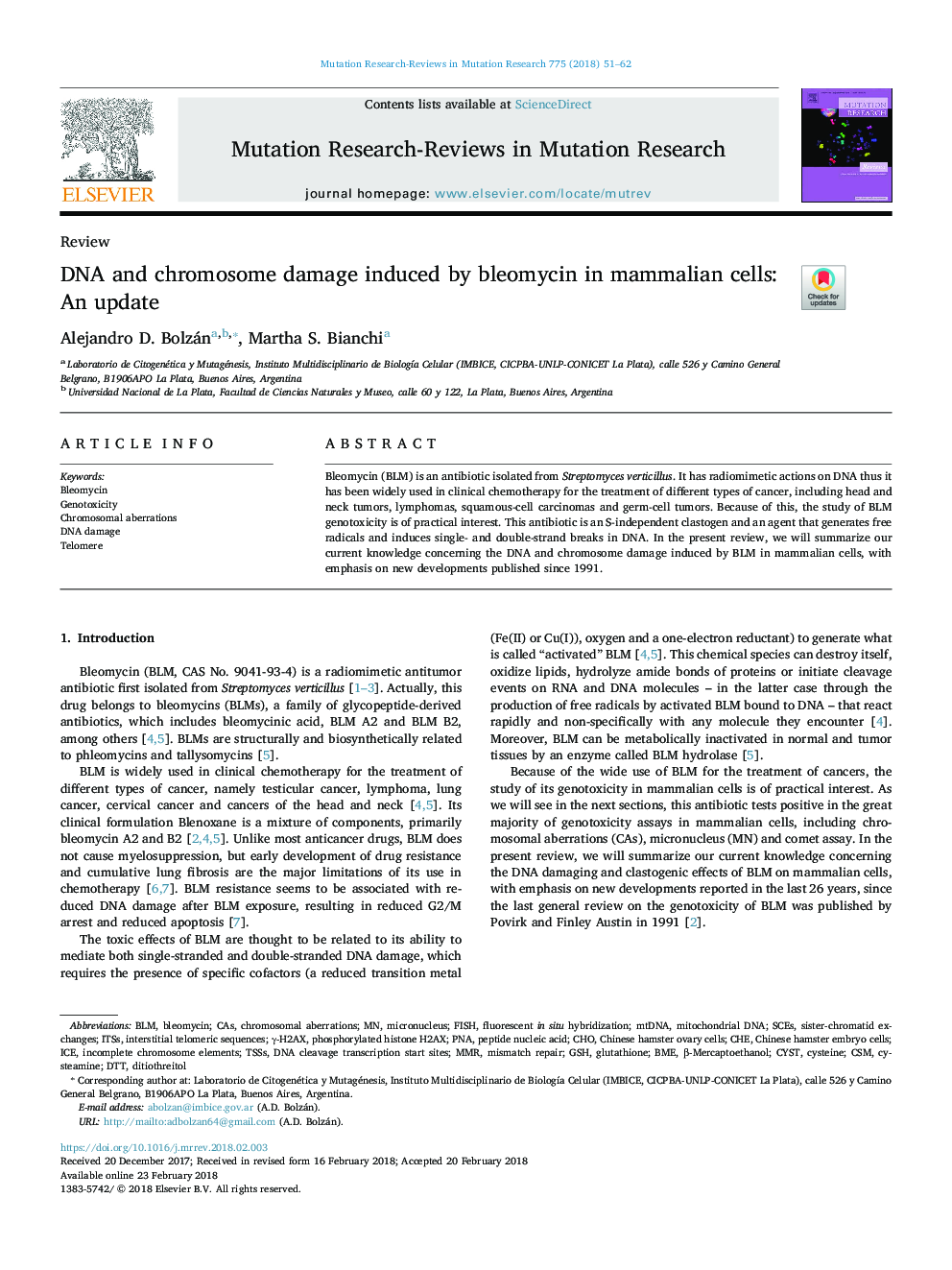| Article ID | Journal | Published Year | Pages | File Type |
|---|---|---|---|---|
| 8456698 | Mutation Research/Reviews in Mutation Research | 2018 | 12 Pages |
Abstract
Bleomycin (BLM) is an antibiotic isolated from Streptomyces verticillus. It has radiomimetic actions on DNA thus it has been widely used in clinical chemotherapy for the treatment of different types of cancer, including head and neck tumors, lymphomas, squamous-cell carcinomas and germ-cell tumors. Because of this, the study of BLM genotoxicity is of practical interest. This antibiotic is an S-independent clastogen and an agent that generates free radicals and induces single- and double-strand breaks in DNA. In the present review, we will summarize our current knowledge concerning the DNA and chromosome damage induced by BLM in mammalian cells, with emphasis on new developments published since 1991.
Keywords
ITSsSCEsCSMMMRBMEDTTBLMGSHPNACASγ-H2AXMitochondrial DNATSSsβ-mercaptoethanolDNA damageChromosomal aberrationsPeptide nucleic acidChoBleomycinsister-chromatid exchangesmismatch repairTelomereInterstitial telomeric sequencesmtDNAChinese hamster ovary cellsGenotoxicityCysteineCysteaminefluorescent in situ hybridizationFishMicronucleusphosphorylated histone H2AXCHECystGlutathioneIce
Related Topics
Life Sciences
Biochemistry, Genetics and Molecular Biology
Cancer Research
Authors
Alejandro D. Bolzán, Martha S. Bianchi,
